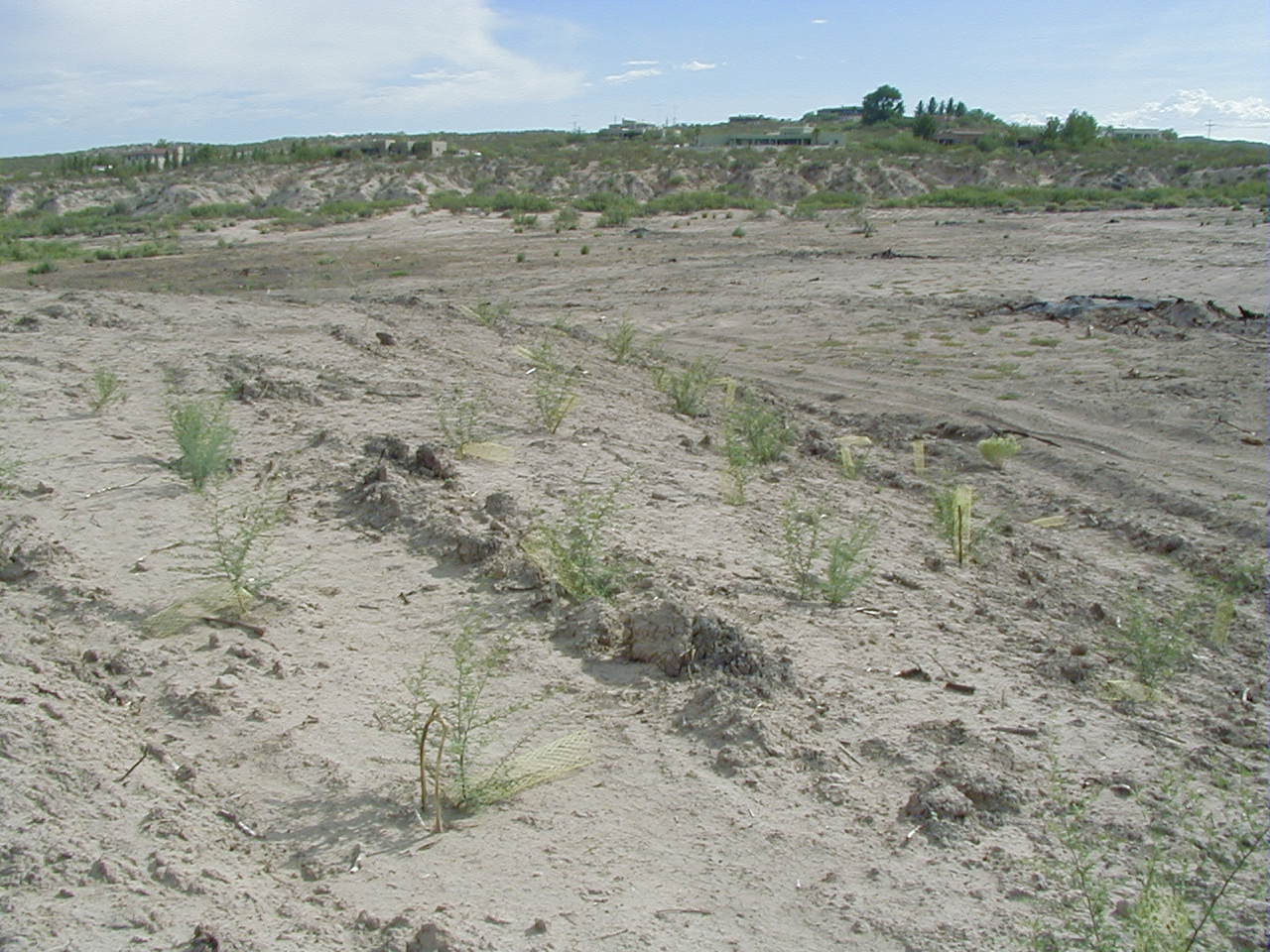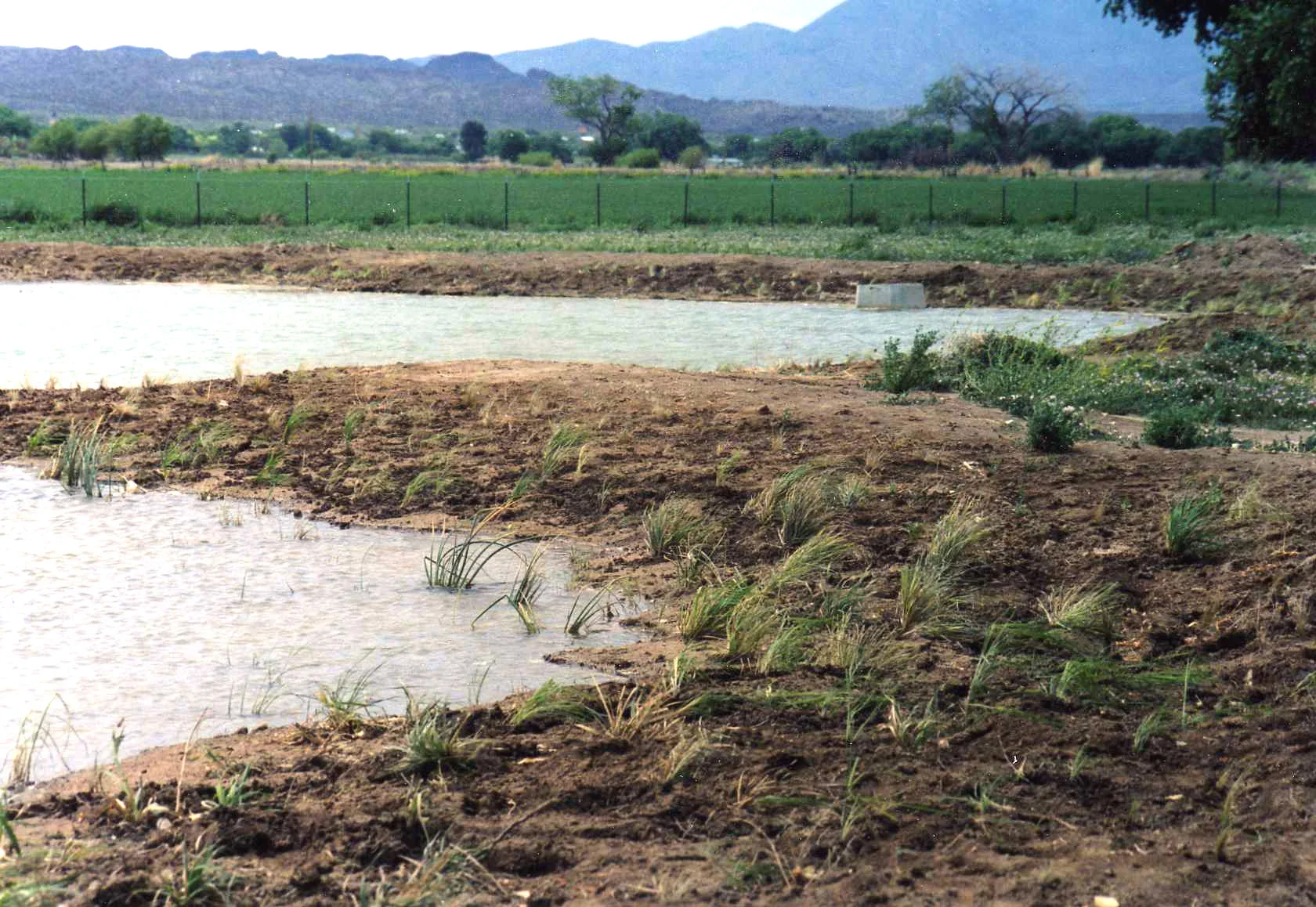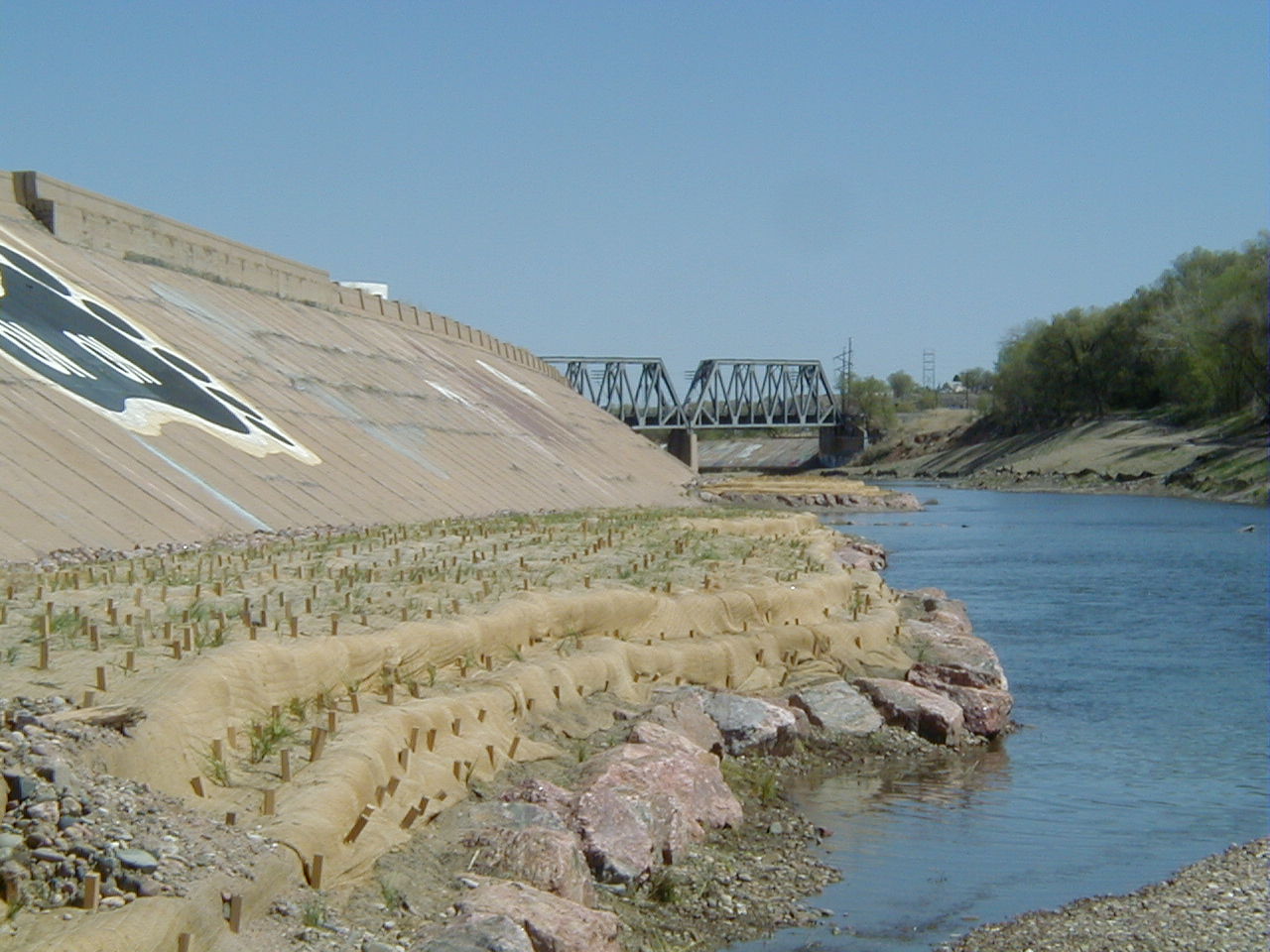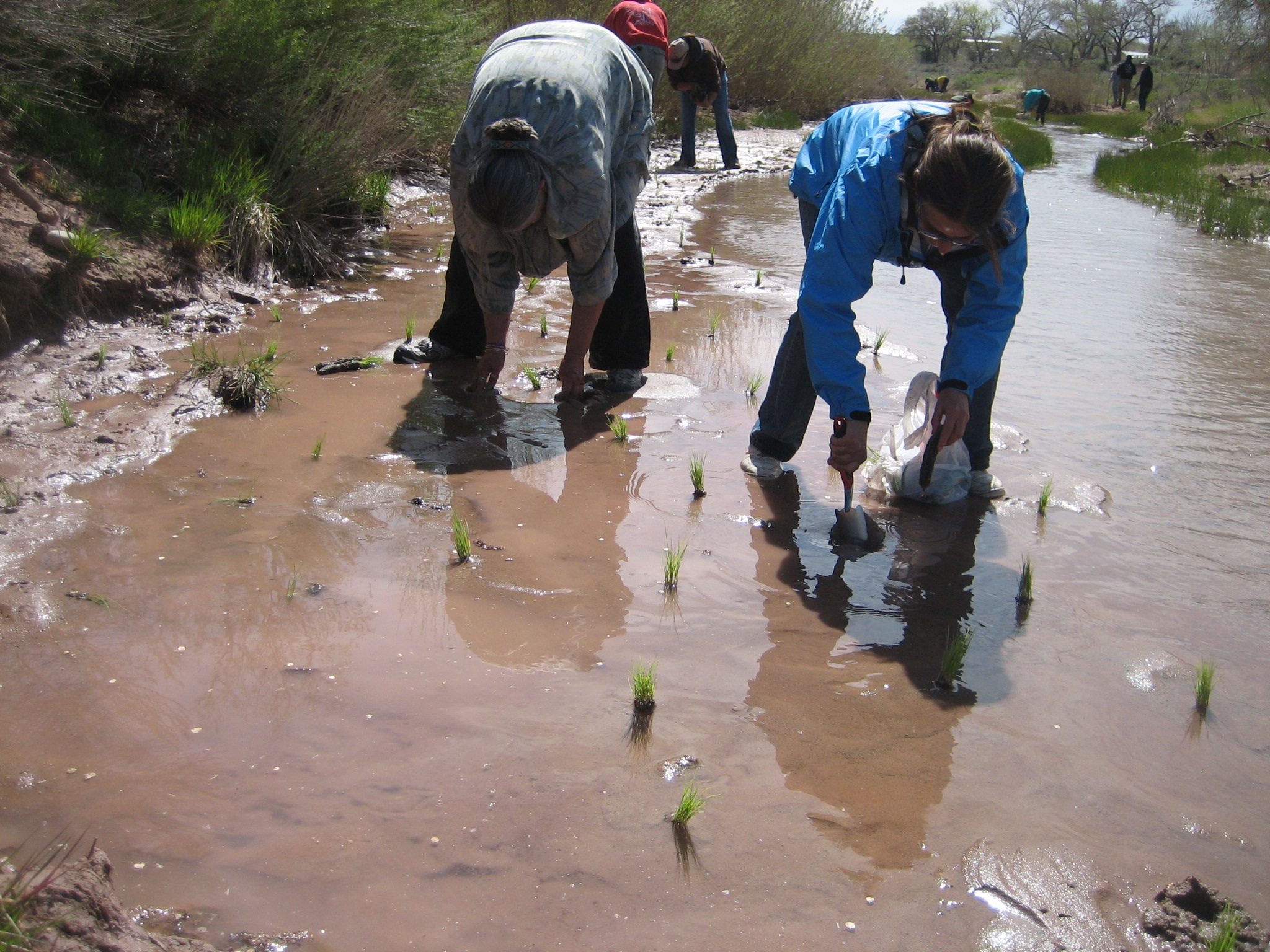Middle rio grande Restoration Project
Hydra Aquatic provided and installed approximately 500,000 native riparian trees, shrubs, and wetland plants for this restoration project.
A multi-agency project, lead by the US Army Corps of Engineers, within the Rio Grande State Park through Albuquerque, NM. The primary goals of the three phase Middle Rio Grande Restoration project were to reconnect the Rio Grande with its historic floodplain, and to remove non-native, invasive plants and replace them with native riparian and wetland vegetaion, creating a more diverse and suitable habitat for the native wildlife.
(Click to enlarge photos)
Hammond Irrigation mitigation
This project was part of a salt-reduction plan for the Colorado River Basin in which existing wetland areas were impacted. Hydra Aquatic was involved in the wetland mitigation as a result of converting dirt ditches to concrete ditches for salt-reduction. Hydra Aquatic provided consulting for the wetland mitigation, and supplied and installed the plant materials, including wetland plugs and cottonwood poles.
(Click to enlarge photos)
isleta lakes project
This project was part of a recreational facility at Isleta Pueblo that included camping areas and fishing lakes. Hydra Aquatic provided the plant materials and installation around the lakes. A high diversity of native wetland plants were used to provide shoreline stabilization and improve aesthetics.
(Click to enlarge photos)
pecos National historic monument
As part of the US Park Service effort to reconnect Glorieta Creek with its historic floodplain, including filling in a large stock tank and re-grading the berm that had been build along the creek, Hydra Aquatic provided and installed plant materials for this project.
(Click to enlarge photos)
picacho wetland creation project
A tract of land that was overtaken by non-native salt cedars was converted to a flow through wetland. The salt cedars were removed, followed by wetland excavation. The water supply for the wetlands was a return flow of the irrigation system, with water returning to the Rio Grande. This was a multi-agency project involving the EPA, the City of Las Cruces, Elephante Butte Irrigation District, NM Game and Fish, and Southwest Environmental Center (SWEC). This unique wetland project had fish from the river coming in to spawn within months of completion.
(Click to enlarge photos)
polvadera pond
This was a US Fish and Wildlife Partners for Wildlife project. A half acre wetland was created by Hydra Aquatic, and has proved to be a refuge for over wintering waterfowl. Species spotted on the pond have included Canvas Back ducks, Sandhill Cranes, and Tundra Swans.
(Click to enlarge photos)
silvery minnow refugium
This project in Las Lunas, NM was designed and funded by the New Mexico Interstate Stream Commission to provide a natural habitat for the spawning and rearing of Silvery Minnows for release into the Rio Grande. The closed-loop facility included vegetated and shallow water habitat for spawning and propagation of fry, with high variability of flow regimes. Hydra Aquatic supplied and installed plant materials for this project. Ross Coleman co-authored a paper on the ecosystem functions of the hatchery, as seen here.
(Click to enlarge Photos)
tingley Wetlands
As part of ongoing mitigation efforts, the US Army Corps of Engineers designed wetland habitats within the historic floodplain of the Rio Grande. The wetlands were built near Tingley Beach in Albuquerque, NM. The wetlands are a popular wildlife viewing area, and attract more than 300 species of birds annually.
(Click to enlarge photos)
Arkansas River project
In 1921, a large flash flood of the Arkansas River through Pueblo, CO resulted in loss of lives, as well as extensive property damage. The river was channelized and the banks raised and concreted through this stretch to prevent future floods. In an effort to provide wildlife habitat through the Pueblo reach, the US Army Corps of Engineers built a pseudo flood plain to provide soils for native vegetation. Hydra Aquatic supplied and installed plant materials for the project.
(Click to enlarge photos)
terrero/el molino mill tailings clean up
El Molino was the mill site for the poly-metallic ore from the Terrero mine. The ore was deposited in a small valley with Alamitos Creek running through it (a tributary of the Pecos River). The 26 acre tailings site included many wetland areas that needed to be restored after the tailings were consolidated. Hydra provided consulting, plant materials, and installation.
(Click to enlarge photos)
hubbell trading post national historic site
Down cutting of Ganado Creek was threatening buildings on the historic site. Using induced meander techniques, Bill Zedyke and volunteers created point bars that trapped sediment, raising the bed level of the stream. To increase biodiversity, the US Park Service hired Hydra Aquatic to grow and install a variety of species on the site.
(Click to enlarge photos)
Tres rios constructed wetland
This project had multiple goals, including water quality improvement, wetland wildlife habitat creation, and riparian restoration along the Salt River, the Gila River, and Agua Fria. Hydra was contracted to grow 500,000 wetland plants for this approximately 1,500 acre facility. The site won national engineering awards, and has become one of the most popular recreation and birding areas in Arizona.
(Click to enlarge photos)
zuni wetland restoration/creation
Wetlands were created on land which prior to upstream irrigation diversions had been historic wetlands . Hydra Aquatic provided consulting, design, and plant materials for the approximately 25 acre site. The wetland attracted wildlife that hadn't been seen in many years.
(Click to enlarge photos)
Munoz flats
This site was the gravel pit for Navajo Dam in northwestern New Mexico. The site had been overtaken by invasive salt cedars, and the NM Game and Fish Department decided to utilize the area for enhancing wildlife habitat, and for hunting and fishing opportunities. River Bend Engineering designed a water supply from a wetland adjacent to San Juan Quality Waters fishing area. The design included several ponds connected by stream channels, with return flow to the San Juan River. Native wetland vegetation, along with cottonwoods, were provided and planted by Hydra Aquatic.
(Click to enlarge photos)


















































































































